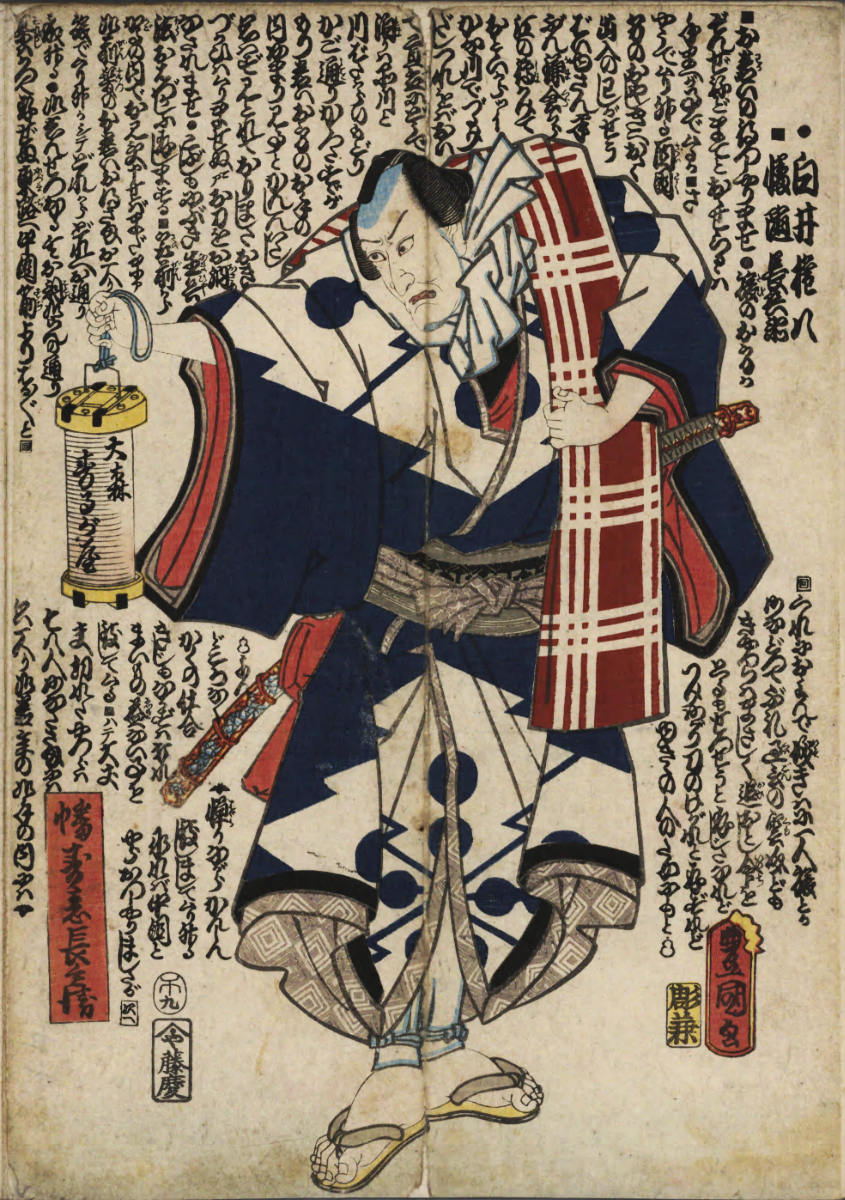Banzuiin Chōbei (1622–1657) was a historical street tough of Japan’s Edo period who, according to later fictionalized portrayals of his life in literature and drama, fought against injustices, and to protect the common people from the abuses of the samurai aristocracy. This character type is known as an otokodate in Japanese literature and drama. Born in Karatsu as Tsukamoto Itarō (塚本伊太郎), he established himself in the Asakusa district of Edo, where he led of a band of machi-yakko and founded an employment agency for rōnin. Trained as a warrior, he was renowned for his swordsmanship. In Asakusa, Chōbei organized a kumi (group or gang) which opposed the hatamoto-yakko in seeking to control the area’s markets. He was eventually killed by hatamoto Mizuno Jūrozaemon. Following his death, Chōbei became a popular figure in literature and drama.
| Alias Banzuiin Chōbei (幡随院長兵衛) |
| Real Names/Alt Names Tsukamoto Itarō (塚本伊太郎) |
| Characteristics Antihero, Outlaw Hero, Samurai, Historical Figures, Scientific Revolution, Japanese |
| Creators/Key Contributors ○ |
| First Appearance Historical figure (b. 1622 – d. 1657) |
| First Publisher ○ |
| Appearance List Film: Oedo go-nin otoko (1951). Biography: A History of Japan: 1615-1867 (1963) by George Sansom. |
| Sample Read A History of Japan, Vol. 3, 1652-1868 [Internet Archive] |
| Description Banzuiin Chōbei (1622–1657) was a historical street tough of Japan’s Edo period who, according to later fictionalized portrayals of his life in literature and drama, fought against injustices, and to protect the common people from the abuses of the samurai aristocracy. This character type is known as an otokodate in Japanese literature and drama. Born in Karatsu as Tsukamoto Itarō (塚本伊太郎), he established himself in the Asakusa district of Edo, where he led of a band of machi-yakko and founded an employment agency for rōnin. Trained as a warrior, he was renowned for his swordsmanship. In Asakusa, Chōbei organized a kumi (group or gang) which opposed the hatamoto-yakko in seeking to control the area’s markets. He was eventually killed by hatamoto Mizuno Jūrozaemon. Following his death, Chōbei became a popular figure in literature and drama. |
| Source Banzuiin Ch%C5%8Dbei – Wikipedia |

